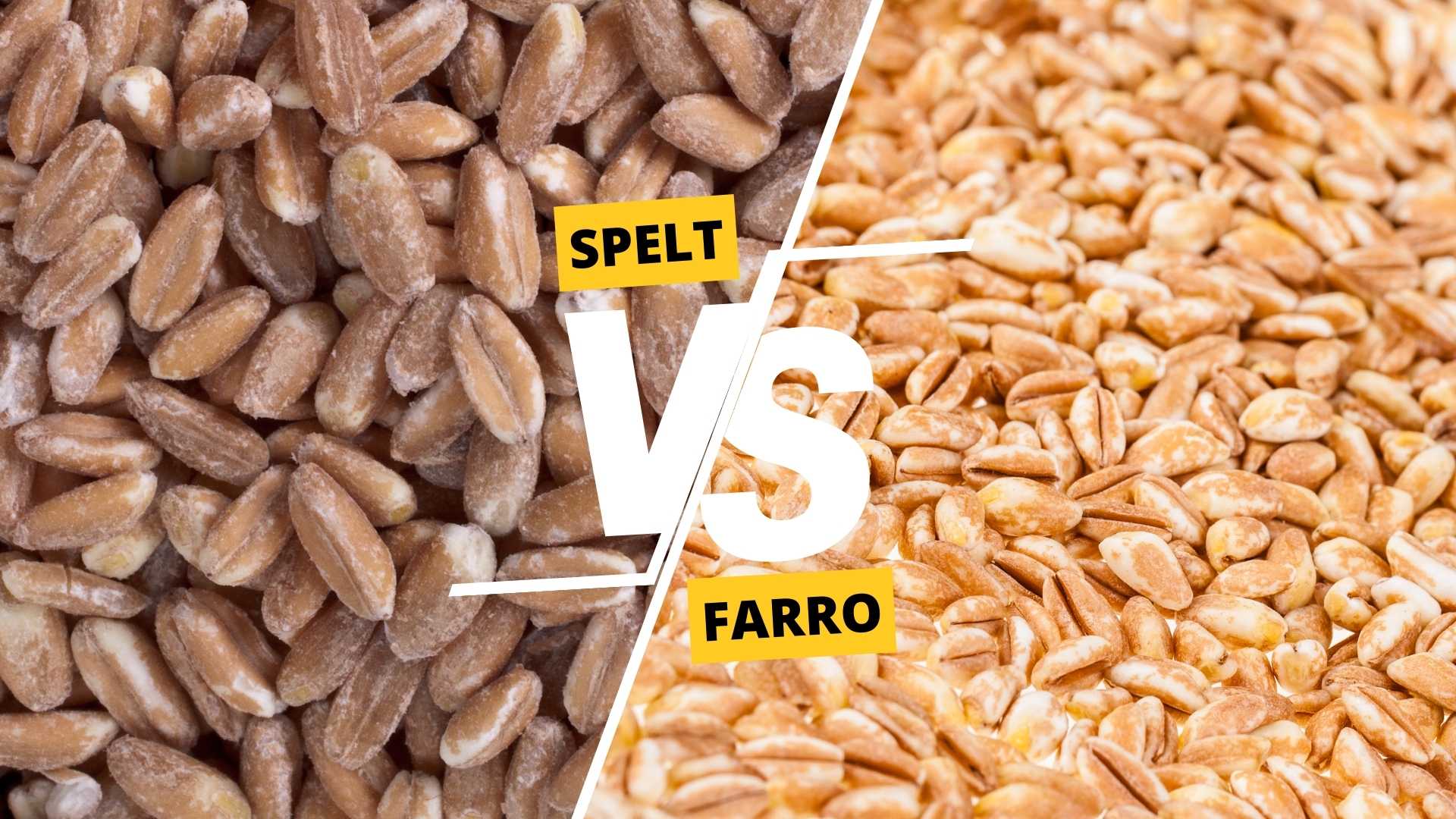Spelt and farro are ancient grains that have gained popularity in recent years due to their nutritional benefits and culinary versatility. While both grains have similarities, there are key differences between spelt and farro that make them unique. In this article, we will compare the nutritional profile, culinary uses, gluten content, farming and production, and availability and cost of spelt and farro.
Comparison of Spelt vs Farro
Nutritional Profile
Macronutrient
Spelt and farro are both high in protein and fibre, but spelt has slightly more protein and less fibre than farro. Spelt also has a higher carbohydrate content than farro, which may make it a better option for athletes or individuals who need quick energy. Farro, on the other hand, has a lower glycemic index, which means it may help regulate blood sugar levels better than spelt.
Micronutrient
Both spelt and farro are good sources of several vitamins and minerals, but there are some differences in their nutrient profiles. For example, spelt is higher in iron, magnesium, and phosphorus than farro. Farro, on the other hand, is higher in zinc and B vitamins than spelt. Both grains are good sources of antioxidants, which can help prevent chronic diseases.
Health benefits
Spelt and farro both have several health benefits due to their nutrient content. For example, the high fibre content in both grains can help regulate digestion and prevent constipation. The protein content in both grains can help build and repair muscle tissue. The high antioxidant content in both grains can help prevent chronic diseases such as cancer and heart disease. Additionally, the micronutrient content in both grains can help improve overall health and well-being.
Culinary Uses
Traditional recipes
Spelt and farro have been used in traditional recipes for centuries. Spelt has been used in bread, pasta, and porridge, while farro has been used in soups, stews, and salads. These traditional recipes showcase the versatility and adaptability of spelt and farro in different cuisines.
Modern recipes
Spelt and farro have also been used in modern recipes due to their unique flavour and texture. For example, spelt has been used in pizza crusts, muffins, and crackers, while farro has been used in grain bowls, risottos, and burgers. These modern recipes demonstrate the creative and innovative ways that spelt and farro can be used in modern cuisine.
Texture and flavour comparison
Spelt and farro have distinct textures and flavours that make them unique. Spelt has a nutty flavour and chewy texture, while farro has a nutty and slightly sweet flavour with a chewy and tender texture. These differences in texture and flavour can influence how spelt and farro are used in recipes and paired with other ingredients.
Gluten Content
Explanation of gluten and gluten intolerance
Gluten is a protein found in wheat, barley, and rye that can cause an immune response in individuals with gluten intolerance. Gluten intolerance can cause a range of symptoms, including digestive issues, skin problems, and fatigue.
Comparison of gluten content in spelt and farro
Spelt and farro both contain gluten, but the gluten content in spelt is lower than in wheat, while the gluten content in farro is similar to wheat. This means that individuals with gluten intolerance may be able to tolerate spelt better than wheat, but they may still have a reaction to farro.
Implications for individuals with gluten intolerance
Individuals with gluten intolerance may be able to incorporate spelt into their diet as an alternative to wheat, but they should be cautious with farro. While some individuals with gluten intolerance may be able to tolerate small amounts of farro, others may need to avoid it completely.
Farming and Production
Origin and history of spelt and farro cultivation
Spelt and farro have a rich history and have been cultivated for thousands of years. Spelt was first cultivated in ancient Mesopotamia and has been used in Europe for centuries. Farro has been cultivated in the Mediterranean region since ancient times and was used in the Roman Empire.
Sustainable farming practices
Spelt and farro are both hardy and resilient grains that can grow in a variety of environments. They are also relatively low-maintenance crops that require minimal fertilizers and pesticides. As a result, spelt and farro is considered sustainable crops that can be grown using organic farming practices.
Processing and packaging methods
Spelt and farro are typically minimally processed and packaged in their whole-grain form. However, they may also be processed into flour, flakes, or pasta. When purchasing spelt and farro products, it is important to look for organic and non-GMO options to ensure that the products are free from harmful chemicals and additives.
Availability and Cost
Availability of spelt and farro in different regions
Spelt and farro are becoming more widely available in grocery stores and speciality food shops. However, availability may vary depending on the region and season. Spelt is more commonly found in North America, while farro is more commonly found in Europe and the Mediterranean.
Comparison of the cost of spelt and farro
Spelt and farro are generally more expensive than other grains such as wheat and rice. However, the cost may vary depending on the region, season, and whether the product is organic or non-GMO.
Accessibility and affordability for consumers
While spelt and farro may be more expensive than other grains, they are still accessible and affordable for consumers who prioritize healthy and sustainable food choices. Additionally, the versatility and nutritional benefits of spelt and farro make them a worthwhile investment for home cooks and food enthusiasts.
Conclusion
In conclusion, spelt and farro is two unique and nutritious grains that have a lot to offer in terms of culinary versatility and health benefits. While there are some differences between spelt and farro, both grains can be incorporated into a healthy and sustainable diet. By considering the nutritional profile, culinary uses, gluten content, farming and production, and availability and cost of spelt and farro, individuals can make informed decisions about how to incorporate these ancient grains into their diet.
